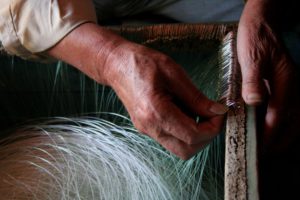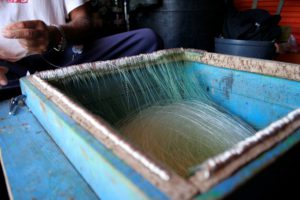Longline Fishing
Away from the tourist hustle and bustle of the summer months, the Algarve gains even more charm and is the perfect time to discover its soul. And for that, nothing better than a visit to the fishing villages that populate the region. Alvor is one of the most picturesque, known for its beaches, narrow streets, estuary and fish and seafood restaurants. Try the cockles with olive oil and garlic, the razor clam soup or a beautiful sea stew.
Artisanal or small-scale fishing is associated normally carrying out the activities of fishing or in inland waters (estuaries, lagoons, rias and rivers), or in oceanic waters close to the coast. The main features of this type of fisheries include the use of small boats more selective, smaller and therefore likely to cause less impact on marine living resources, and there is also a close association between the fisherman, the resources and the community in which it operates.
The gear used in Portugal in the artisanal fleet is very varied, but they can be grouped according to their main characteristics according to the classifications of Von Brandt (1972) and Rebordão (2000), to group fishing gear and methods – therefore, the longline fishing technique is a very old and widespread fishing method throughout the coast, estuaries, lagoons, estuaries and rivers, with complex devices consisting of many hooks.
In Alvor, longline fishing is the basis for the livelihood of some fishermen and takes on a family character, either through the help of women in their preparation, or through the sharing of the boat among a close family. Housed in a wooden box, the device consists, depending on its size, of a main wire, the purlin, which can reach kilometers, from which approximately 300 to 1500 hooks depart, individually armed with hooks. Before going to sea, the hooks are baited with cockles, razor clams, squid, or other bait, depending on the time of year. The launch of the device is made from the stern of the vessel in motion, with the current in favor. After each trip to the sea, the apparatus must be “rogue” – the hooks must be untangled and repaired and the hooks tied, if necessary.



